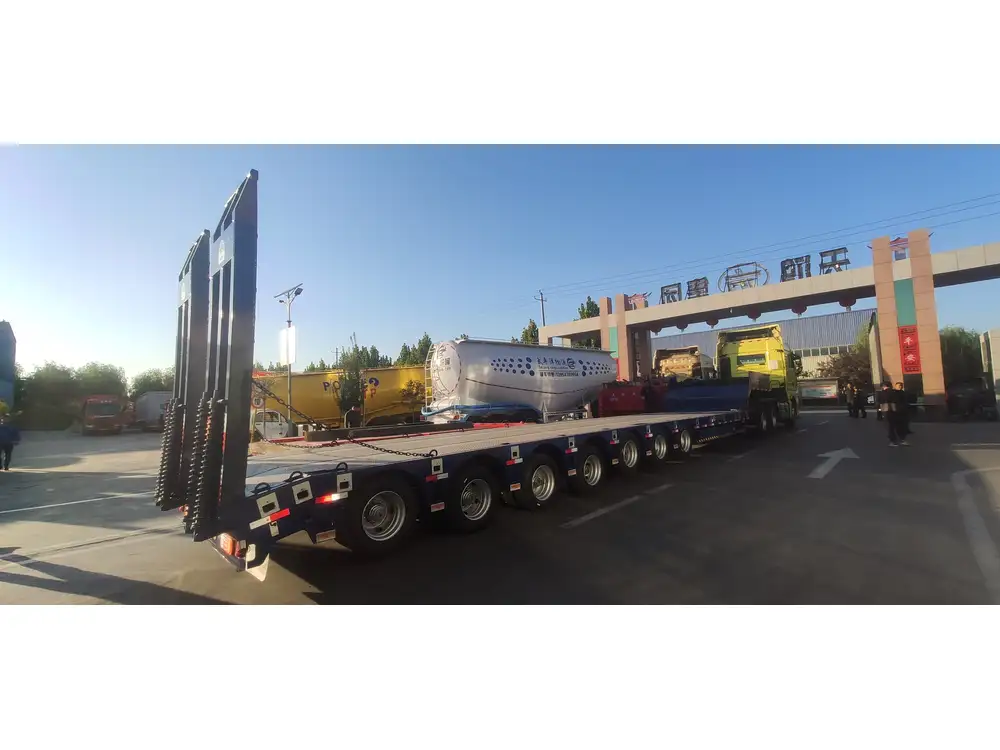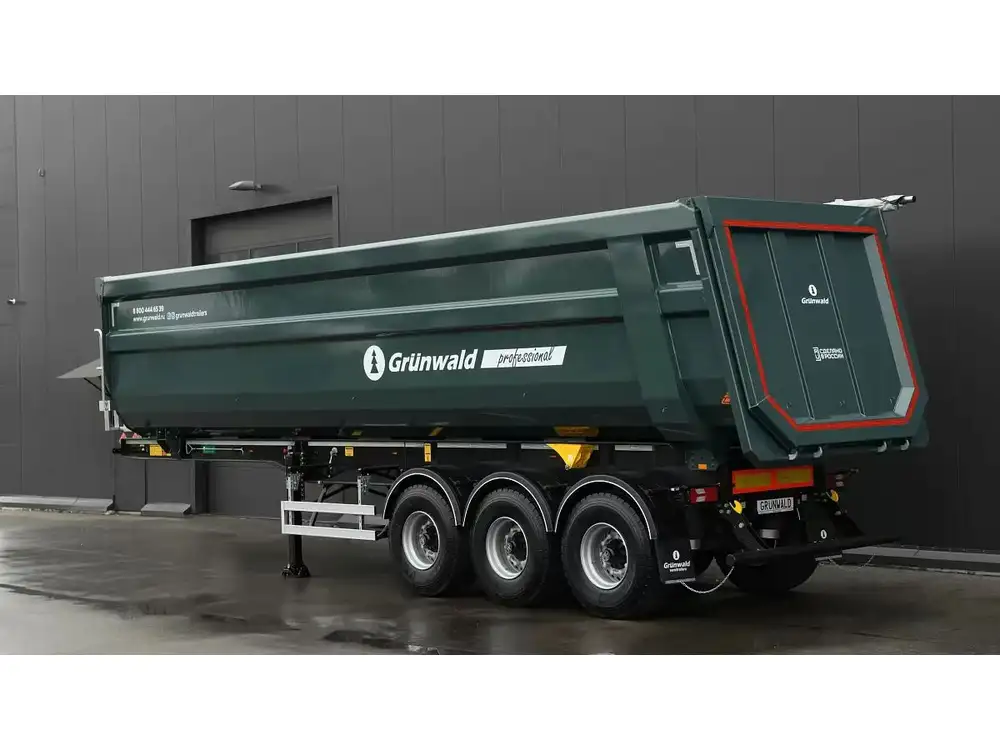Backing a semi-trailer is a skill that combines precision, spatial awareness, and ample practice. For both novice drivers and seasoned professionals, understanding the mechanics of backing a semi can drastically improve operational safety and efficiency. In this guide, we delve into the intricate details of mastering the art of backing a semi-trailer effectively.
Understanding Your Equipment: The Semi-Trailer Breakdown
Before embarking on the journey of backing a semi-trailer, it’s vital to familiarize oneself with the trailer components. Knowing one’s equipment inside-out amplifies performance.
| Component | Function |
|---|---|
| Fifth Wheel | Connects the trailer to the truck; allows pivoting. |
| Kingpin | Locks into the fifth wheel, securing the trailer. |
| Axles | Determine weight distribution and handling. |
| Tires | Provide traction and stability; proper inflation is crucial. |
| Lights and Brakes | Ensure visibility and safety; essential for indication when reversing. |
Essential Preparation Steps
Before any maneuver, preparation is key. Here’s what we should consider:

1. Inspect the Surroundings
Conduct a pre-operations safety check. Assess the surroundings for obstacles, pedestrians, and potential hazards. Make use of the following checklist:
- Clear Path: Check for any obstacles such as other vehicles, trees, and fixtures.
- Weather Conditions: Rain, fog, or strong winds can heavily influence maneuverability.
- Ground Conditions: Uneven or soft terrain may affect stability.
2. Trailer Positioning
Understanding the optimal positioning of your trailer enhances the effectiveness of the backing maneuver.
- Angle Approach: Ideally, position the trailer at a 45-degree angle to the parking space prior to backing.
- Mirror Usage: Utilize both side mirrors and rearview mirrors effectively for maximum visibility.
3. Communication is Crucial
When working in tight spaces, communication with ground personnel (if available) becomes paramount. Employ hand signals or radios for clear, concise communication.

The Step-by-Step Backing Procedure
Once prepared, it’s time to execute the backing maneuver. Here, we outline the critical steps:
Step 1: Align the Truck and Trailer
Start by placing the truck in a position where it aligns with the intended backing path. This means ensuring that the truck cab faces directly toward the designated backing area.
Step 2: Initiate the Reversal
Shift the transmission into reverse, but first, check mirror visibility to ensure the path is clear of obstructions.

Step 3: Utilize the Steering Wheel Effectively
- To direct the rear of the trailer to the right, turn the steering wheel to the right.
- Conversely, to guide the back of the trailer left, turn left. However, it is essential to remember that turning the wheel to the right rotates the front of the truck to the left and vice versa.
Step 4: Maintain a Steady Speed
Keeping a very slow and controlled speed is critical. Quick movements increase the risk of jackknifing or losing control.
Step 5: Observe Trailer Movement
Keep a close eye on the trailer’s movement and respond accordingly. If the trailer starts to sway, re-center the steering wheel and adjust position gradually.

Step 6: Continuous Check
Look out the windows and continuously utilize mirrors for a three-dimensional awareness of your vehicle’s position. Adapt and adjust as necessary while maintaining forward motion with the cab.
Step 7: Straighten Out
Once the trailer is in the lane, steer straight to align the truck and trailer. Allow momentum to assist you while continually monitoring the mirrors.
Common Mistakes and How to Avoid Them
In the backing process, certain common pitfalls can lead to significant issues. Being aware of these can streamline the learning process.
- Rushing the Process: Slowing down allows for focused movements. Take your time to avoid miscalculations.
- Neglecting Mirrors: Failing to check mirrors can lead to collisions. Develop a habit of constant mirror checks during each maneuver.
- Oversteering: Overcorrections can result in unintended consequences. Instead, focus on small, precise adjustments to maintain control.
- Ignoring Blind Spots: Every vehicle has blind spots. Always ensure full visibility before reversing.

Visualizing Common Mistakes
| Mistake | Explanation | Solution |
|---|---|---|
| Rushing | Results in poor control and errors. | Prioritize patience and precision. |
| Oversteering | Causes erratic movements. | Make small, controlled turns. |
| Not using mirrors | Leads to unaware collisions. | Habitual mirror checks. |
| Blind spots | Can obstruct view of nearby challenges. | Always perform a full circle look. |
Techniques for Enhanced Backing Skills
Mastery comes with practice, but several techniques can also enhance one’s backing prowess:
The “S” Maneuver
- Use this technique when navigating into tight spaces.
- Create an “S” shape while backing out. Start right, then sharply switch left, effectively trailing the rear of the trailer into the space.

The Sightline Technique
- Use markers, like cones or chalk lines, to parallel park trailers. This method provides a visual reference to achieve proper angles and minimize error.
K-Turn Methodology
For situations where turnaround space is restricted, the K-turn can be essential:
- Begin forward, swinging the nose around to one side.
- Shift into reverse and direct the trailer back while adjusting the cab’s position.
Concluding Thoughts on Backing a Semi-Trailer
Mastering the backing of a semi-trailer encapsulates an intricate blend of technique, patience, and practice. Employing thoughtful preparation, executing careful movements, and constantly assessing surroundings culminate in an improved skill set that promotes safety in all transportation operations.
As a manufacturer, we understand that delivering not only high-quality equipment but also enriched knowledge about operational safety is vital. We encourage ongoing practice, and additional training for drivers stands as unequivocally beneficial in cultivating a culture of efficacy and responsibility within the transportation industry.
By embracing these techniques and remaining vigilant to challenges, truckers can navigate their way into tight spots with confidence, precision, and a touch of artfulness. Whether you’re maneuvering in busy urban lots or remote loading docks, the skills outlined in this guide will not only enhance backing proficiency but also ensure that every operation continues smoothly and safely.
Happy backing!



